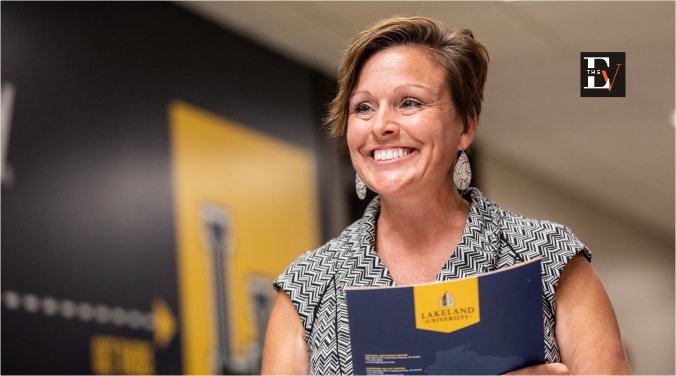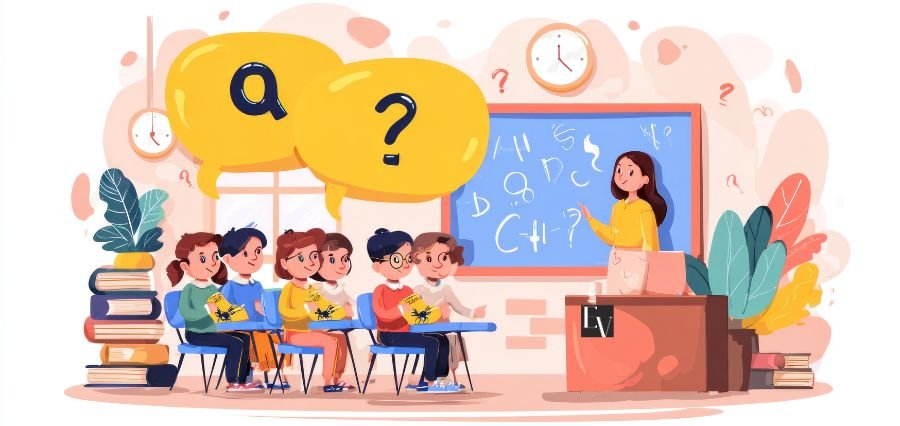Higher education is a gateway to knowledge, innovation, and social mobility, equipping individuals with the skills and critical thinking necessary to succeed in a fast-growing world. As education systems progress, there is a growing focus on accessibility, inclusivity, and real-world application. Institutions are adapting to diverse learning needs, integrating experiential education, and developing new models to support students from various backgrounds. The focus is on academic excellence and ensuring students are prepared for career opportunities, lifelong learning, and societal impact. With the rise of technology and the demand for industry-specific skills, higher education is continuously shifting to meet these new expectations and create meaningful pathways for students to thrive in their personal and professional journeys.
As President, Beth Borgen has emerged as a leader dedicated to shaping higher education with a strong commitment to inclusivity and student success. With a leadership approach rooted in collaboration and transparency, she ensures that institutions adapt to the growing needs of students while maintaining a focus on academic integrity and excellence. Her ability to create opportunities for first-generation college students reflects her deep understanding of the challenges they face and her dedication to making education accessible. She is recognized for her holistic leadership style, which combines various aspects of an institution to create a seamless support system for students and employees. She continues to influence higher education through her vision, ensuring that students receive academic knowledge and the skills and confidence needed to excel in their respective fields.
Lakeland University, established in 1862 and based in Sheboygan County, Wisconsin, has built a reputation for innovation and commitment to student success. The university takes pride in providing a supportive and inclusive educational environment, mainly focusing on first-generation college students and non-traditional learners. Through strategic partnerships and forward-thinking initiatives, Lakeland continues to expand its academic offerings while staying true to its mission of empowering students. The institution’s dedication to experiential learning, community collaboration, and workforce preparation ensures graduates are well-equipped to contribute meaningfully to society. As it adapts to changing educational demands, Lakeland remains a hub of opportunity, striving to bridge the gap between education and career readiness.
Let’s explore Beth’s innovative strategies for advancing higher education:
A Career Shaped by Access and Opportunity
Beth never expected to work long-term in higher education. Her first role was in alumni relations and event planning, and she intended to create a career in event planning. However, once her role was expanded to include advancement, she was quickly drawn to the important work higher education does for students’ lives. As a first-generation college student, she understands the importance of access and opportunity.
Her college experience changed her life, and she is grateful to work in an industry where lives are changed every day. As she advanced in her career, she was drawn into increasingly challenging and rewarding roles. When she started at Lakeland University 20 years ago, she and her husband lived 40 minutes away, and she told him she would find something closer to home within a year. Twenty years later, this is her home.
Supporting First-Generation Students
Her current role has been shaped by her personal experience and the professional opportunities she has had to grow. Beth’s master’s degree is from Lakeland University, which allowed her to understand the challenges working parents face while trying to elevate their careers and advance their knowledge.
Her journey to the presidency was not traditional, but it has prepared her for this leadership role and helped her understand the operational functions of higher education. In her previous role, she had overseen every aspect of the institution outside academics and saw how collaboration was needed to support students. Her doctoral journey allowed her to dig deeper into how first-generation college students can be supported.
Beth’s research helped her understand more of the academic side of the university. She was fortunate to be able to apply her doctoral work to support students and eventually teach a course, which gave her a better understanding and appreciation of how to lead a classroom well. Her collective experiences allow her to lead in a very holistic way.
Building a Strong Leadership Team
Beth’s leadership style is collaborative and transparent. She believes building a strong leadership team is essential to the success of any college president. She also believes it is important to surround oneself with smart, motivated people.
Her leadership has been shaped by working with people from throughout the campus. For example, in one of her prior roles, she worked closely with dining services and learned a lot by understanding how they operate. Her time at Lakeland University has allowed her to build deep relationships and trust with people at all university levels.
Beth believes a big part of leadership is listening. She welcomes people to share thoughts and feedback on what is working and what can be improved. She listens and acts when it makes sense to do so. The key is striking a balance between being the person setting the vision with input from everyone and trusting the leadership team without micromanaging their work. Her job is to remove barriers so every team member can do what they need to move the university forward.
Addressing the Nursing Shortage Together
Innovation is in Lakeland’s DNA. It is what keeps Beth at Lakeland. Lakeland has always approached problems to find solutions so all students have access. Essential to innovation is the way Lakeland understands what the community and region need and finds a way to be a solution for employers and organizations. Beth approaches challenges with a ‘how might we’ attitude, often leading to innovation instead of ‘we can’t do that.’
Strategic partnerships in today’s higher education are essential. Lakeland has built trust over the years with various partners in a way that continues to innovate and approach challenges from a different lens. A big part of that is working with other colleges and universities. It is collaboration versus competition.
How can colleges and universities complement each other and work together to support more students? A recent example is Lakeland’s nursing program partnership with Moraine Park Technical College. Lakeland did not have a nursing major and was losing a lot of students who wanted to play sports and major in nursing. MPTC offered an associate degree in nursing. By partnering together, they are addressing the shortage of nurses and enrolling students they otherwise would not have seen without the partnership.
Enhancing Support for Diverse Students
Beth started her presidency in the middle of a pandemic. Lakeland was managing the pandemic at its various Wisconsin locations and Tokyo campus in a country that closed its borders for two years. Most of the students there are international, so enrollment was significantly impacted.
Higher education continues to feel the impact of COVID. Lakeland is working hard to meet students where they are because academic and social preparedness is not the same as before the pandemic. Like all institutions, Lakeland is preparing for the demographic shifts leading to the much-discussed “enrollment cliff.”
The pandemic caused Lakeland to react in ways that have helped prepare for these demographic changes. Lakeland plans to serve more students of color and first-generation college students, which will require rethinking support systems and identifying ways for the next generation of students to feel a sense of belonging.
Staying Informed in Higher Education
Like many in higher education, Beth is part of numerous listservs, always reading articles and talking to peer presidents about their wins and challenges. She surrounds herself with information and people who keep her connected to the pulse of higher education and the external factors that impact it.
Her service on several community boards helps her monitor the external environment, identify opportunities for Lakeland to provide solutions, understand how what is done impacts the region, and ensure relevance and understanding of trends outside higher education. The leadership team often trades books, almost like an industry-focused book club. Beth also shares relevant articles regularly with the trustees, allowing them to keep a pulse on higher education trends.
Cooperative Education and Employment Pathways
As long as Lakeland identifies opportunities to deliver on its mission, it will always benefit and influence society. Lakeland’s Cooperative Education program, which allows students to earn up to 25% of their academic credits through work and guided reflection, serves the region and develops pathways to employment and accessibility for all students. Non-traditional-age students use the program to learn on the job and showcase their skills to their employers through project-based learning.
Lakeland’s responsibility is to prepare students for employment and develop them while employed. Another example is the Life & Career Studies program, which provides a complete college experience for young adults between the ages of 18 and 25 who have an intellectual disability. It is rooted in the mission and will have a broader societal impact on the students in the program, their peers, and those they impact when they leave. Lakeland’s focus on serving first-generation and underserved students has a larger societal impact.
There is a dual credit partnership with the Sheboygan Area School District that last school year saw nearly 900 students take free dual credit courses, earning more than 5,000 college credits worth more than $2 million. That partnership was motivated by the goal of increasing the college attainment rate in Sheboygan County. The co-locations in technical colleges around the state allow Lakeland to complement their offerings and work with employers in those regions to fill gaps, which is also mission-driven.
Leading by Example in Work-Life Balance
When living on campus with her husband and children, Beth works hard to separate her personal and professional life. They recognize the importance of striking a healthy balance. When she initially talked with her husband about applying for the presidency, she said, “If we’re going to do this, we’re going to be all in, and it’s going to be a lifestyle.” The Borgens find time to physically get off campus because it’s hard to go home from work when home is at work.
Her kids are in middle and high school, and that only happens once. They are increasingly involved in activities, and she must be there for them. She wants that for the employees as well. It is essential to demonstrate some separation so the leadership team and others realize there needs to be a balance. She will not ask anyone to do what she is not doing. People need to understand it is okay, actually essential, to have a balance.
Recognizing Women’s Achievements
While she did not intend for it, part of her doctoral research centered on imposter syndrome. Beth was fascinated and surprised to see how much focus was on women in higher education, and she could see herself feeling what other women were feeling. Women need to recognize that and counter it by remembering all the accomplishments and hard work they have gone through to get where they are. She highlights that “Your success is not because of luck. You’re there because of your hard work.”
While it is not easy to balance being a mom, a wife, and a college president, it can be done. When Beth became Lakeland’s first female president, her daughters asked why people made it such a big deal. She told them it took 160 years for it to happen. She was proud that it was not a big deal for a woman to be named president in their eyes.
Prioritizing Innovative Ideas
Beth does not know what she wants to be when she grows up, and she is OK with that. The fact that she is happy to go to work every day is a blessing. She was excited to come back after Christmas break. There is still so much good work to be done, and she can see the potential for Lakeland in 2037 when it will celebrate its 175th anniversary. What will the world need, and how can Lakeland adapt and grow to ensure it prepares graduates for the world at that time? Those are great, inspiring, and motivating discussions.
When she considers what has changed in the last decade, she is fascinated by what changes will be coming by 2037. There is no shortage of innovative ideas, and she works with the team to prioritize and create a timeline so they come to fruition. That excites her. There is no shortage of promising ideas to be implemented.
To support the vision, it takes a dedicated team at all levels and people who believe in the mission and work toward a common goal. She wants Lakeland to be known as a place where anyone can increase or enhance their education while also being a great place to work and a welcoming community to be part of.





